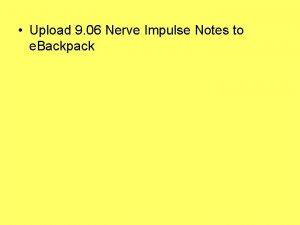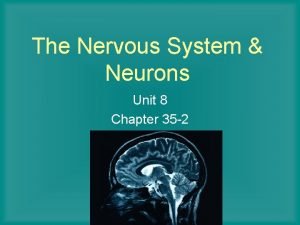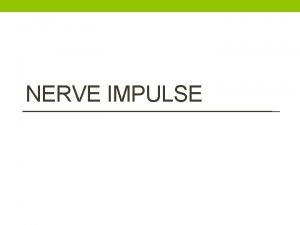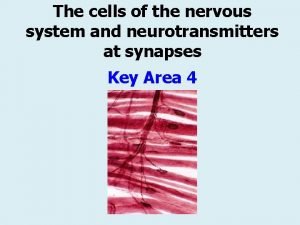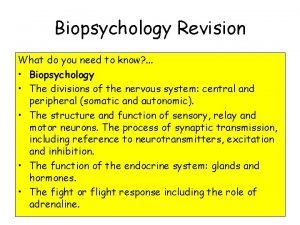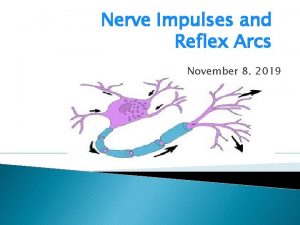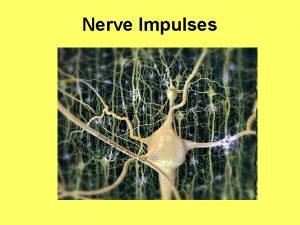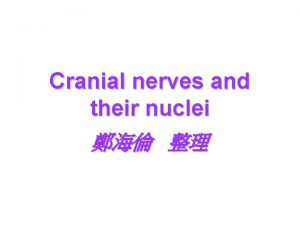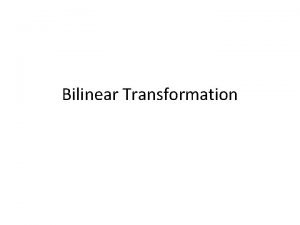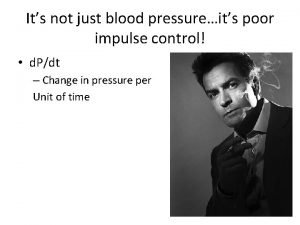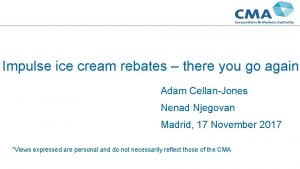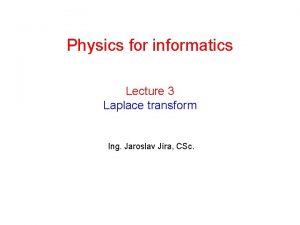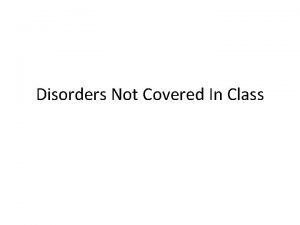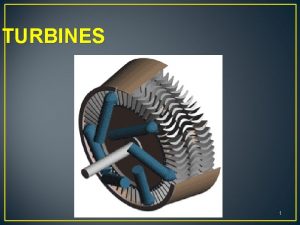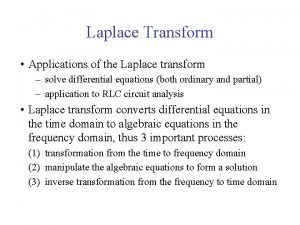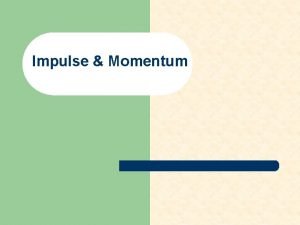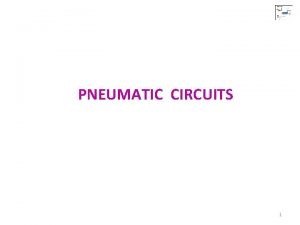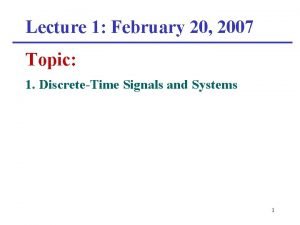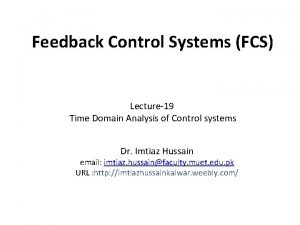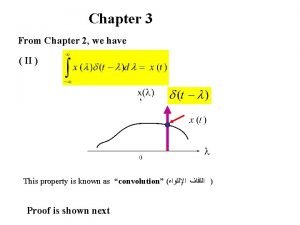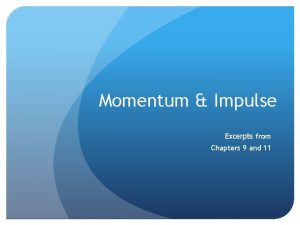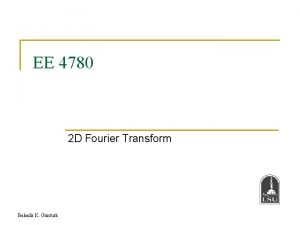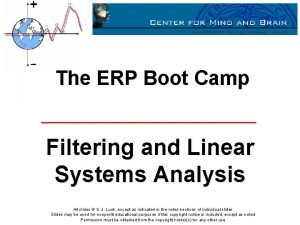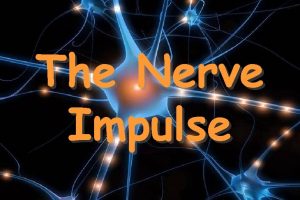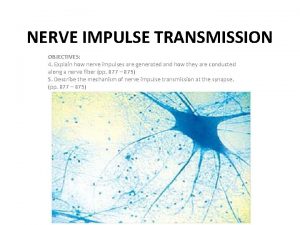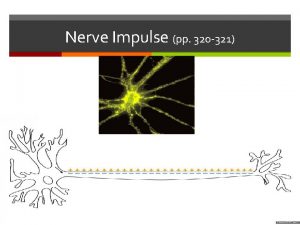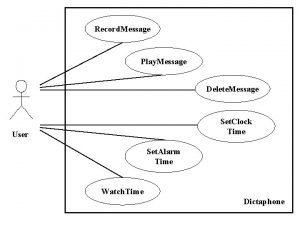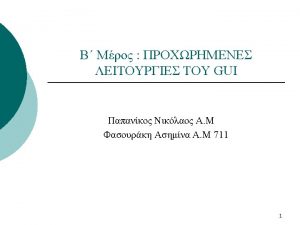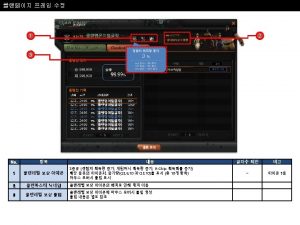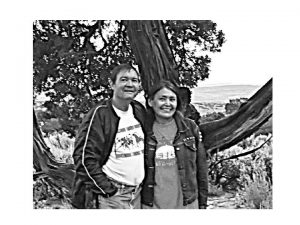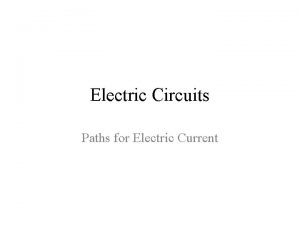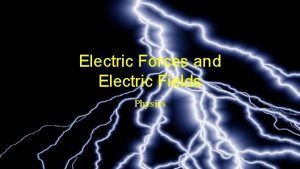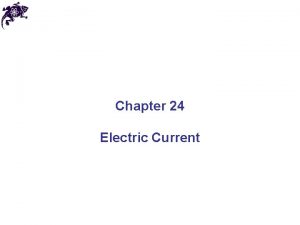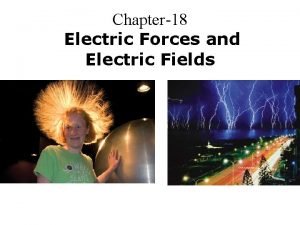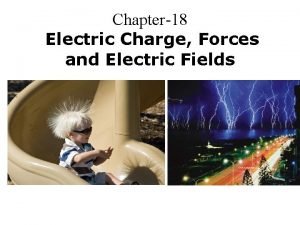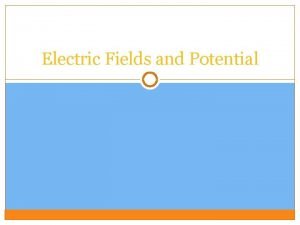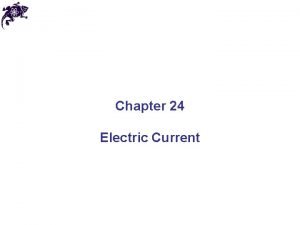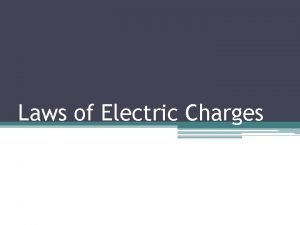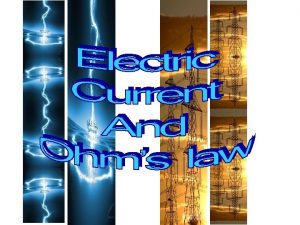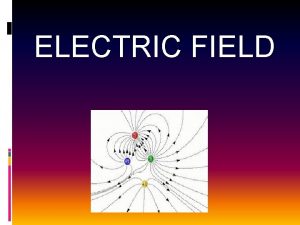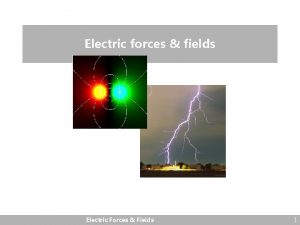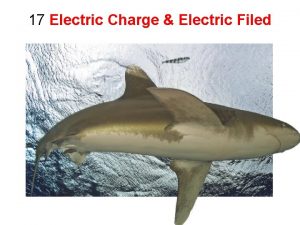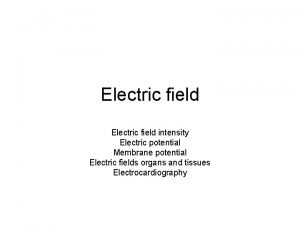NERVE IMPULSE NERVE IMPULSE l An electric message





































- Slides: 37

NERVE IMPULSE

NERVE IMPULSE l. An electric message sent on neurons. 4 stages of sending message.

STEP 1 l. Resting potential: -70 m. V (millivolts) difference between inside and outside. l. Na+ ions outside l. K+ and Proteins inside.

STEP 2 l. Action potential: Membrane stimulated l. Na+ gates open (come in) l. Depolarization (+30 m. V)

Step 3 l. Repolarization: l. K+ ions gates open (go out) l. Returns to -70 m. V

Step 4 l. Recovery: l. Na/K pumps use ATP (energy) to pump back to original places. l. Shuts down until complete!




CONDUCTION l. The nerve impulse travels like a wave. l 2 different methods.

CONDUCTION l. Myelinated: impulse jumps from node to node. FASTER (100200 m/sec)

CONDUCTION l. UN-myelinated: impulse goes from point to point. SLOWER (1 m/sec)

l. Look at your textbook example on page: 223


Synaptic Transmission


Synaptic Transmission l. Chemical message going from one neuron to another.

SYNAPSE l. Where impulse crosses gap by changing from electric chemical electric

COLOR CODE l. Please color code the synapse l. B, I, g, j, h, k

Synaptic knob l. B. Enlarged end of the axon.

Synaptic Cleft li. The gap between dendrite and knob.

Synaptic Vesicle l. G. Hold chemical neurotransmitter.

Neurotransmitter l. J. Chemical released to cross cleft and start impulse. l. Aceytlcholine (Ach) l. Page 216

Presynaptic Membrane l. H. Membrane of axon before Cleft.

Postsynaptic Membrane l. K. Membrane of dendrite AFTER cleft. l. Contain receptor sites for neurotransmitter.




EVENTS l. There are basically seven steps that happen when a signal is sent over the synaptic cleft.

EVENTS l 1. Action potential arrives at synaptic knob (+30 m. V)

EVENTS l 2. Ca ++ ions flow into the synaptic knob.

EVENTS l 3. Vesicles merge with pre-synaptic membrane and release neurotransmitter.

EVENTS l 4. Neurotransmitter (Ach) diffuses across cleft (key).

EVENTS l 5. Neurotransmitter binds with receptor (lock) on postsynaptic membrane.

EVENTS l 6. Na+ gates open and action potential begins.

EVENTS l 7. Neurotransmitter broken down by enzyme (Ache). l. Gates close.

 Nerve impulse animation
Nerve impulse animation Nerve impulse transmission steps
Nerve impulse transmission steps Nerve impulse
Nerve impulse Nerve impulse transmission steps
Nerve impulse transmission steps Nerve impulse transmission
Nerve impulse transmission Three types of neurons
Three types of neurons Nerve impulse
Nerve impulse Nerve impulse transmission steps
Nerve impulse transmission steps Chapter 21 electric charge and electric field
Chapter 21 electric charge and electric field Electric field and electric potential
Electric field and electric potential Dc o/d per item charge
Dc o/d per item charge Formula for electric feild
Formula for electric feild A suitable electric pump in an electric circuit is a
A suitable electric pump in an electric circuit is a Electric charges and electric forces lesson outline
Electric charges and electric forces lesson outline Potential energy in uniform electric field
Potential energy in uniform electric field Chapter 21 electric charge and electric field
Chapter 21 electric charge and electric field Electric potential vs electric potential energy
Electric potential vs electric potential energy Electric force
Electric force Trigeminal nerve which cranial nerve
Trigeminal nerve which cranial nerve Impulse invariant transformation
Impulse invariant transformation Anti impulse therapy
Anti impulse therapy Impulse ice
Impulse ice Laplace transform shift
Laplace transform shift Intermittent explosive disorder
Intermittent explosive disorder Reaction and impulse turbine difference
Reaction and impulse turbine difference Specific impulse
Specific impulse Laplace transformation formulas
Laplace transformation formulas What has momentum
What has momentum Impulse pneumatic circuit
Impulse pneumatic circuit Physics 03-06 impulse and momentum answer key
Physics 03-06 impulse and momentum answer key Impulse response of lti system examples
Impulse response of lti system examples Impulse g+ mini fault codes
Impulse g+ mini fault codes Steady state response in control system
Steady state response in control system Impulse input
Impulse input Impule units
Impule units Symbol for impulse
Symbol for impulse Fourier transform of impulse train
Fourier transform of impulse train Erp boot camp
Erp boot camp
